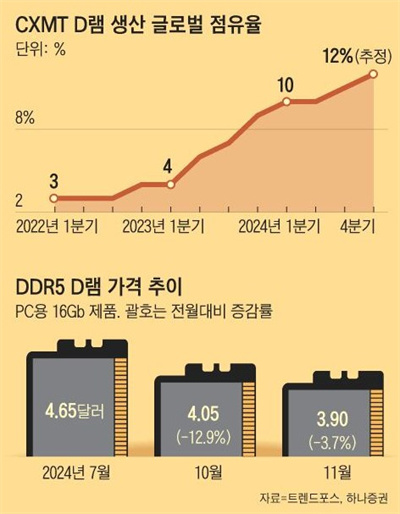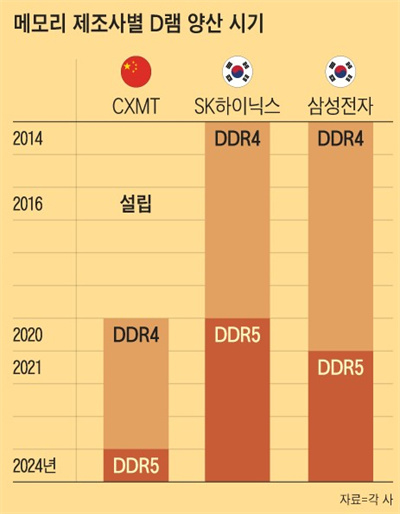Chinese DRAM manufacturer CXMT (Changxin Memory Technologies) has officially started mass production of DDR5 memory chips, marking a significant step in its efforts to close the technology gap with industry leaders such as Samsung and SK Hynix. According to reports from South Korea's ZDNet Korea, multiple DRAM module manufacturers have already begun selling DDR5-based DRAM modules, indicating that CXMT is quickly catching up to the world's top DRAM producers.
Until recently, only a handful of companies, including Samsung, SK Hynix, and Micron, were capable of producing DDR5 chips. However, CXMT has now joined this exclusive group. Industry sources suggest that CXMT has achieved a yield rate of approximately 80% in its DDR5 production, a competitive rate considering that Korean manufacturers report yield rates ranging from 80% to 90%. This marks a significant improvement in the Chinese company's production capabilities.
Meanwhile, Chinese memory module brands such as KingBank and Gloway have begun selling DDR5 DRAM modules, boasting 32GB capacities. Although these brands have not officially disclosed the source of their DDR5 chips, industry observers believe that CXMT is the manufacturer behind these products. The modules, labeled as "国产DDR5" (Chinese-made DDR5), are being promoted on online platforms as part of the “Made-in-China” initiative.
According to Jeongdong Choi, a semiconductor analyst at TechInsights, CXMT's DDR5 production has been a development worth watching. Choi revealed that the chips are being produced using a G3 process technology (17.5nm linewidth), marking an evolution from the previous G1 (22nm) technology used for DDR4 production. Choi added that while CXMT has not officially announced the full-scale commercialization of its DDR5, its move into the DDR5 market is noteworthy.


This move by CXMT could significantly impact the global DRAM market. DDR5, which offers four times the capacity and twice the data processing speed of its predecessor DDR4, is increasingly being adopted in desktop computers and large server systems, especially in the AI sector. While CXMT's DDR5 chips are still somewhat behind those produced by Samsung and SK Hynix in terms of performance, the company is narrowing the gap. CXMT's chips are currently being produced with older equipment, as the company is unable to access EUV (extreme ultraviolet) lithography machines due to U.S. sanctions. However, as production ramps up, CXMT's market share in the DRAM sector could see a significant rise.
Despite Samsung and SK Hynix holding a dominant share in the global DRAM market—41.1% and 34.4% respectively as of Q3 2023—CXMT's rise in the DDR5 segment poses a growing challenge, particularly within the Chinese market. If CXMT continues to expand its market share, especially in AI server and PC applications, it could severely impact the sales of Korean manufacturers in China. Analysts predict that, if CXMT's low-cost strategy continues, it could disrupt the pricing dynamics and profitability of Samsung and SK Hynix, forcing them to reconsider their strategies in China.

While CXMT's global market share in DRAM production currently stands at 12% according to TrendForce, its actual sales numbers remain unclear. Despite this, the company's mass production of DDR5 represents a key milestone in China's push to become more self-sufficient in semiconductor technology, particularly in the high-performance memory market. As China faces increasing technological and trade restrictions from the U.S., the nation is keen to demonstrate its growing capability in semiconductor manufacturing, with CXMT at the forefront of this effort.
What's Next for CXMT?
With its successful foray into DDR5 production, CXMT's future prospects in the global DRAM market will be closely watched. While still lagging behind its Korean competitors in terms of performance, CXMT's ability to scale its production and drive down costs could pose a serious threat to Samsung and SK Hynix in the coming years. The semiconductor industry will need to monitor how CXMT's growth unfolds and whether its cost-effective strategy can reshape the global DRAM landscape.
+86 191 9627 2716
+86 181 7379 0595
8:30 a.m. to 5:30 p.m., Monday to Friday
